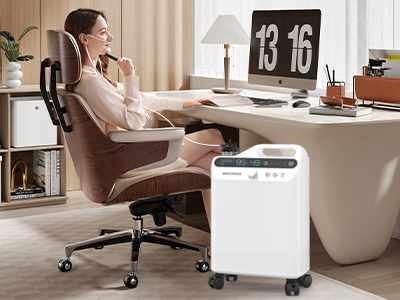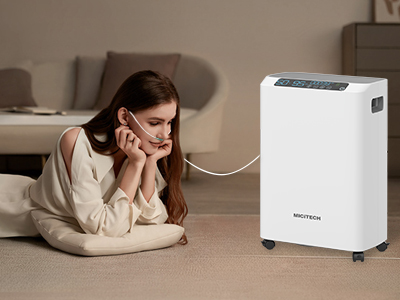27 Oct 2023
Oxygen concentrators are vital medical devices that provide a consistent and reliable source of oxygen to those with respiratory conditions. They play a crucial role in enhancing the quality of life and health of individuals who depend on supplemental oxygen.
The Role of Acceptance Criteria
To ensure the safety, effectiveness, and reliability of oxygen concentrators, acceptance criteria are established. These criteria serve as essential guidelines to evaluate and select the right device. In this article, we explore the key acceptance criteria that should be considered when choosing an oxygen concentrator.

Regulatory Standards for Oxygen Concentrators
FDA and ISO Requirements
Regulatory bodies like the U.S. Food and Drug Administration (FDA) and the International Organization for Standardization (ISO) have laid down stringent requirements for medical devices, including oxygen concentrators. These regulations set the foundation for product quality and safety.
Compliance with Quality Assurance
Choosing an oxygen concentrator that complies with these regulatory standards is crucial. Compliance ensures that the device meets specific quality assurance measures, reducing the risk of substandard or unsafe equipment.
Oxygen Purity
Oxygen purity refers to the concentration of oxygen in the air provided by the concentrator. It signifies the device's ability to deliver high-quality, uncontaminated oxygen to the user.

Acceptable Purity Levels
1. Medical-Grade Oxygen For medical applications, oxygen concentrators must provide a minimum purity level of 90%. However, many devices offer even higher levels of purity, ensuring patients receive oxygen that meets rigorous medical standards.
Common Purity Standards
Understanding the accepted purity standards in different healthcare settings, such as hospitals and home care, is important to match the concentrator to the specific needs of the patient.
Flow Rate
Flow rate denotes the quantity of oxygen delivered by the concentrator, typically measured in liters per minute (LPM). It directly influences the patient's ability to maintain proper oxygen saturation.
Customized Flow Rates
1. Prescribed Flow Rates Oxygen concentrators should be capable of adjusting to the prescribed flow rates recommended by a healthcare provider. This customization ensures patients receive the right amount of oxygen to address their specific medical requirements.
2. Adaptability to Patient Needs The device's ability to adapt to the changing oxygen demands of the patient is essential, especially for those with variable needs during different activities and periods of rest.
Noise Levels
A. Noise and User Comfort Noise levels of oxygen concentrators can significantly impact user comfort and quality of life. Excessive noise can cause stress and discomfort, particularly in home settings.
B. Maximum Permissible Noise Levels 1. Residential vs. Clinical Settings Acceptance criteria should consider the context of use. In residential settings, quieter devices are often preferred, while clinical settings might have different noise tolerance levels.
2. Noise-Reducing Technologies Innovations in noise reduction technologies, like sound insulation and advanced mufflers, are crucial for selecting a concentrator that minimizes disturbances.
Durability and Reliability
A. Device Longevity Reliable oxygen concentrator should have a long lifespan, ensuring that the investment in the device pays off over the years.
B. Ensuring Reliable Operation 1. Maintenance and Servicing Routine maintenance and timely servicing are vital to ensure that the concentrator operates at peak efficiency throughout its life. Consider the availability of replacement parts and a well-established servicing network.
2. Warranty Considerations Warranties and support from the manufacturer should be evaluated, as they can provide peace of mind regarding repairs and replacements.
Portability and Mobility
A. Versatility in Usage For patients who lead active lives, portability and mobility become critical. Oxygen concentrators should be versatile, allowing users to travel and engage in daily activities without restrictions.
B. Factors Affecting Portability 1. Weight and Size Lightweight and compact concentrators are ideal for those on the move, as they can be easily transported.
2. Battery Life Long battery life is essential for portable concentrators, enabling users to venture outside without being tethered to a power source.
Safety Features
A. Essential Safety Mechanisms Safety features in oxygen concentrators are non-negotiable. These include mechanisms to prevent overheating, electrical hazards, and oxygen concentration alarms.
B. Alarms and Sensors 1. Low Oxygen Concentration Alarms These alarms are crucial for alerting users when oxygen purity falls below acceptable levels, allowing for immediate intervention.
2. Overheating Protection Overheating protection mechanisms safeguard against device malfunctions, which can be dangerous in both home and clinical environments.
Conclusion
A. The Crucial Role of Acceptance Criteria Acceptance criteria for oxygen concentrators are essential for patient safety and well-being. These criteria ensure that the selected device meets the highest standards of quality, reliability, and performance.
B. Making Informed Choices for Oxygen Concentrators By considering these acceptance criteria, individuals and healthcare providers can make well-informed choices when selecting oxygen concentrators, leading to improved patient outcomes and a higher quality of life.
Keywords: oxygen concentrator
Originally published 27 Oct 2023, updated 27 Oct 2023.